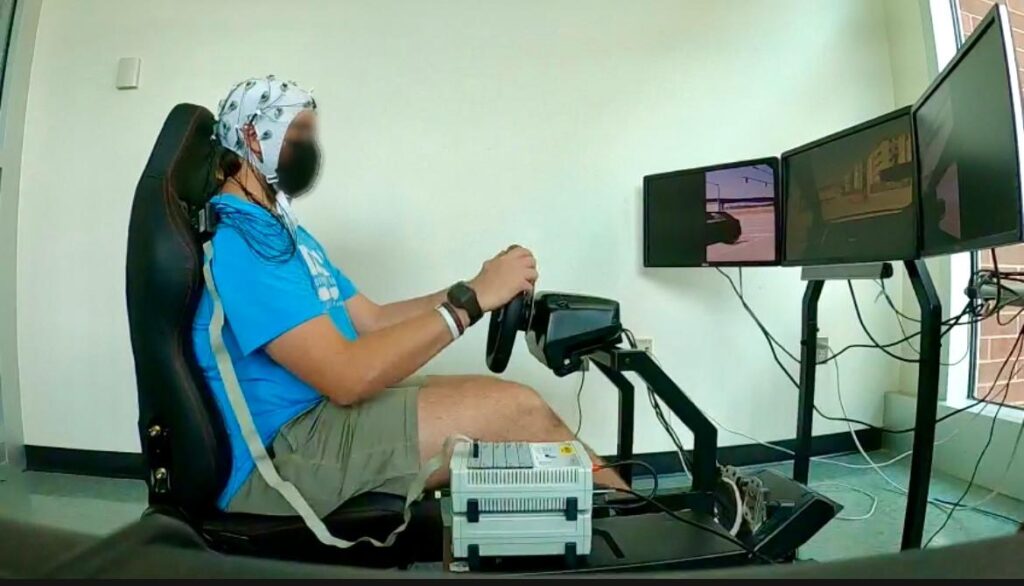Re-Inventing the Wheel: How Dr. Ali Bazzi’s Driving Simulator can Change the Future of Autonomous Driving
Written by Olivia Ortegon, Ben Donohue, Matt Mancini
Buckle-up everyone! Safe driving has become a hot topic as advances within the automobile industry keep evolving. UConn and the Center for Clean Energy Engineering’s (C2E2) Dr. Ali Bazzi and his co-principal investigator Dr. Sabato Santanello have been conducting research on their very own open-source driving simulator here on campus. The goal of this simulator, compared to other one’s in use, is to use open-source tools in addition to electroencephalogram (EEG) and wristband sensors to extract user data from the participants to understand the human element of autonomous driving. The simulator features a steering wheel, a gear shifter, and an ability to see the back mirror on a computer screen with another computer screen acting as the windshield. The simulator has a much lower price tag than commercial simulators, and can be easily replicated for further research on safer driving and human integration into the car.
The program, named “CARLA”, is an open-source software that Dr. Bazzi and his team are using for the simulator. Some of the features it has is summoning virtual pedestrians, police cars, and other obstacles within different environments. Dr. Bazzi also explained that there’s already many sensors in the automobiles we drive. He asked himself, “why not feed layers of power electronics that include controls, predictions, and health monitoring into the vehicle with human perception to work together for safer driving?”

The main idea is to keep this simulation open-sourced with the hope of making it something that can be shared with the rest of UConn and maybe the rest of the world. “Our contribution is that we are integrating open-source driving software with sensors and a controlled driving and fault injection environment to assess how humans and cars can benefit from exchanging fault diagnostic information”, Dr. Bazzi explains. “With more researchers working with this software and building on the simulator to make it better, comes the hope of making driving safer across the world.”
One of the cool features of the software is that it also has markers to engage a flat tire or check engine light which would specify where on the map it happened. Once collected, both the wristband and EEG data go into a spreadsheet or data file where they are later singularized and condensed into one data file. The researchers measure brain activity and heart rate data as well to see how the driver responded to it and where a failure happened
Dr. Bazzi’s inspiration to develop and design this simulator stems from his belief of less autonomous or even semi-autonomous driving. “No autonomous car in the market right now can guarantee safety. The uncertainty comes from human drivers, and pedestrians may not work well with autonomous algorithms”, he explains. “The goal is for the driver and vehicle to work together in order for a safer driving environment”.
One unique value of this experiment is that humans are directly involved. This simulator is one of many innovative research projects that goes on at UConn. Dr. Bazzi highlights two students: Ph.D. student Leila Chebbo and undergraduate student Zachary Stone, as well as his co-PI Dr. Sabato Santanello for their work and dedication to this project. “They’ve been phenomenal in setting this [the driving simulator] up”.

